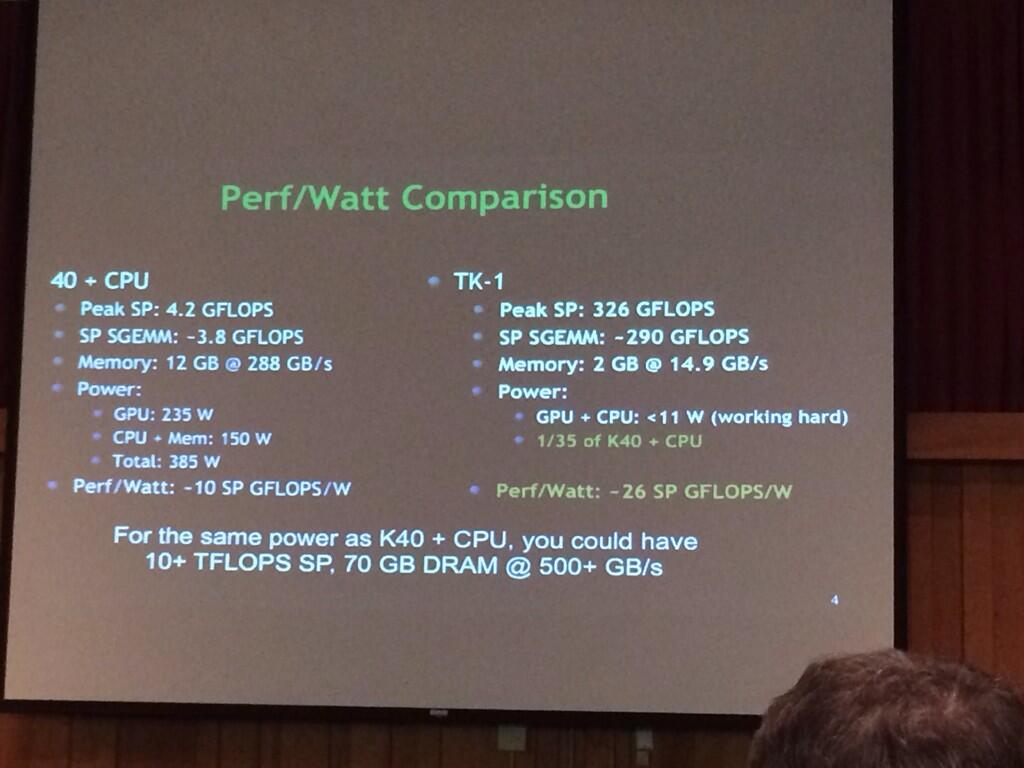So much for that 60 watt hit piece.
http://news.softpedia.com/news/Tegr...led-Has-5-8W-TDP-11W-at-Top-load-439981.shtml
Another Article Link: http://wccftech.com/stats-nvidia-tegra-k1-superchip-wattage-finally-revealed
I don't think anyone sane ever believed that K1 has an as insane TDP as 60W. In any case the Tesla K40 vs. Tegra K1 slide has two distinct "errors"
1. The Tesla K40 obviously has a peak of 4.2 TFLOPs SP and not GFLOPs.
2. The Tesla system is compared on a TDP basis while Tegra K1 on a "SDP" basis (it states "working hard").
Here the slide in question:

https://twitter.com/ProfMatsuoka/media
The first link (softpedia? for crying out loud....) has the most technically entertaining title of them all:
I don't think I'll bother to read an article where the author doesn't seem to have a clue what TDP stands for.NVIDIA TegraK1 SoC Finally Detailed, Has 5-8W TDP, 11W at TopLoad.
***edit: it would be nice for a change if all those wannabe authors like the bloke at wccf tech would actually have the courtesy to honor the actual sources where they get each bit from. Above is the link for the actual source and it's not like he was told by anyone else or that he has any actual sources, apart from constant plagiarism. The tweet in question is up there for around a week now.
